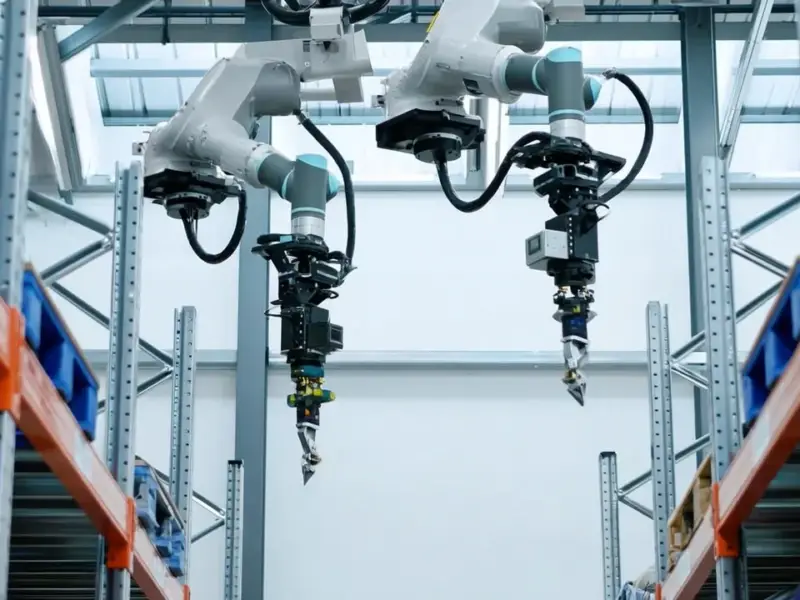According to DIGITIMES, major Japanese automakers and suppliers have reported limited disruptions from the recent halt in semiconductor exports by Nexperia, with Denso executive vice president Yasushi Matsui stating on October 31, 2025 that 99% of the Nexperia chips they used were general-purpose products replaced through other suppliers. Denso leveraged inventory buffers and alternative sourcing strategies to avoid production stoppages, while Toyota Boshoku confirmed sufficient inventory and alternative procurement plans for overseas products. The disruption contrasts with the acute 2020 pandemic chip shortage, with S&P Global Ratings analysis finding automakers with diversified supply chains experiencing milder repercussions than those heavily dependent on single suppliers. This incident reveals important lessons about modern supply chain resilience.
The Evolution of Automotive Supply Chain Strategy
The automotive industry’s approach to semiconductor procurement has fundamentally transformed since the 2020-2022 chip crisis that cost the industry millions of vehicles in lost production. What we’re witnessing now represents a maturation of risk management strategies that prioritize redundancy over pure cost efficiency. Companies like Toyota and Denso have moved beyond simple inventory buffers to develop sophisticated multi-tier contingency plans that include component redesign capabilities, supplier qualification processes for alternative sources, and real-time supply chain monitoring systems. This represents a significant departure from the just-in-time manufacturing principles that dominated automotive thinking for decades.
The Hidden Vulnerabilities in Chip Substitution
While the 99% substitution rate for general-purpose chips sounds impressive, the remaining 1% requiring design adjustments reveals a deeper vulnerability in automotive electronics. These specialized components often control critical safety systems, engine management, or advanced driver assistance features where even minor specification changes can trigger lengthy requalification processes. The automotive industry’s rigorous safety standards mean that substituting a $2 chip might require millions of dollars in testing and validation. This creates a hidden bottleneck that could surface in future disruptions involving more specialized semiconductors, particularly as vehicles become increasingly electrified and automated.
Geopolitical Dimensions of Chip Sourcing
The Nexperia situation underscores how geopolitical factors are reshaping automotive supply chains beyond pure economic considerations. As a Chinese-owned company with European operations, Nexperia exists at the intersection of multiple trade policy environments. Automakers are now forced to navigate not just supply availability and cost, but also export controls, trade sanctions, and national security concerns. This complexity drives the diversification strategies mentioned in the report, but it also creates new challenges in managing quality consistency and intellectual property protection across multiple global suppliers. The industry is essentially trading operational simplicity for geopolitical resilience.
Long-Term Financial Implications
Denso’s decision to exclude this incident from fiscal year 2025 financial forecasts suggests confidence in their mitigation strategies, but it masks the substantial costs involved in maintaining these redundant systems. The capital tied up in inventory buffers, the engineering resources dedicated to component redesign capabilities, and the administrative overhead of managing multiple supplier relationships all represent significant ongoing expenses. While these costs are preferable to production stoppages, they fundamentally change the economics of automotive manufacturing and may contribute to the steady upward pressure on vehicle prices that consumers have experienced in recent years.
Future Outlook and Industry Implications
The successful navigation of this disruption demonstrates that lessons from the pandemic chip shortage have been learned, but it also sets a dangerous precedent for complacency. The automotive industry’s increasing semiconductor dependency—with modern vehicles containing over 3,000 chips—means that future disruptions could have cascading effects across more systems. As vehicles become more software-defined and electrified, the industry will need to develop even more sophisticated risk management approaches, potentially including deeper vertical integration, strategic partnerships with chip manufacturers, and advanced predictive analytics for supply chain monitoring. The current success story shouldn’t obscure the need for continued innovation in supply chain resilience.




